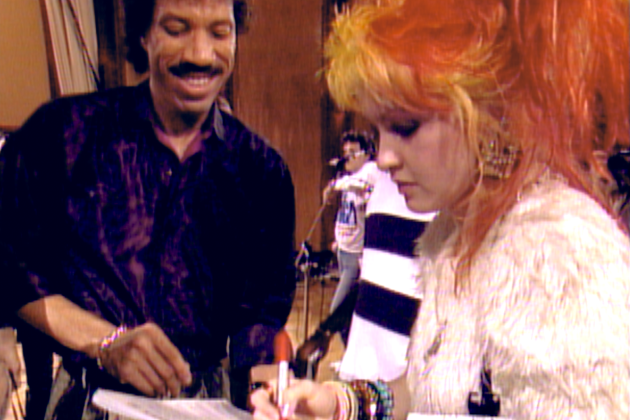How the Documentary Boom Has Been a Boon for Music Storytelling


As a child of the 1980s, I thought I knew pretty much everything I needed to know about Wham!, just as I thought I had a pretty good handle on the behind the scenes of the late-night all-star recording of “We Are the World.” But maybe that’s why I enjoyed the docs “Wham!” and “The Greatest Night in Pop” so much — a mix of the familiar with those moments of surprise.
In the case of “Wham!,” it’s how Andrew Ridgeley managed to be so gracious as his buddy George Michael went on to a massively successful solo career. In “The Greatest Night in Pop,” I learned just how instrumental Lionel Richie was in serving as traffic cop for producer Quincy Jones in creating “We Are The World” with dozens of A-list musicians over just one late night. The doc is filled with legend-help-legend moments, like when Stevie Wonder jumps in to mimic Bob Dylan, to help him figure out his part in the song.
More from Variety
It’s no secret that we’re living in a golden age for documentaries. But that has been an especially good thing for music obsessives, as passion projects abound. There seems to be no shortage of subjects, or of found footage that chronicles an iconic (or long-forgotten) event in music history.
Besides those two Netflix projects, recent examples include Hulu’s “Thank You, Goodnight: The Bon Jovi Story,” Disney+’s “The Beach Boys,” Max’s “Stax: Soulsville U.S.A.,” A&E’s “James Brown: Say It Loud” and so much more.
“It’s an incredible time for music storytelling,” says RadicalMedia entertainment president Dave Sirulnick, whose company was behind the 2021 Oscar documentary winner “Summer of Soul” and just produced “Lil Nas X: Long Live Montero” for Max. “Right now, we have five different music-based docs and docuseries in production. It’s a competitive market, but I don’t think it’s slowing down.”
Music docs come in many forms, of course. There are the contemporary films or series that follow an artist, particularly one embarking on something big or new. “I often gravitate to those kind of transformative moments, where the people themselves don’t know what the outcome is going to be,” Sirulnick says.
Then there are the docs that look back at someone’s career or a moment in time. In that case, it all depends on the footage that can be procured. In 2021’s “The Beatles: Get Back,” director Peter Jackson sifted through a lot of cutting-room-floor clips from the “Let It Be” sessions and put a completely new spin on how people viewed the band’s impending breakup. With “Summer of Soul,” it was about rescuing footage of the 1969 Harlem Cultural Festival from obscurity. And in “The Greatest Night in Pop,” the filmmakers recovered old video footage with nonexistent audio and matched it with audio from a reporter’s Dictaphone.
Luckily, as Sirulnick notes, “with the most popular musicians of the last 50, 60 years, there have been film and TV crews around them. So there could be an incredible wealth of material out there. And also, when we do films about musicians who came up in the ’80s, ’90s and 2000s, it’s the era of home video cameras. A lot of times that becomes quite amusing and quite useful.”
For Jamila Wignot, the director of “Stax,” there was an embarrassment of riches — she had access to the label’s entire catalog of music. Still, because the label was based in the 1950s and early 1960s in Memphis, far from New York or L.A., an excellent archival producer was needed in order to gather as much footage as possible.
Wignot also faced the challenge of pleasing the deep music fans while having a story broad enough to attract people who might only know a mainstream song like Otis Redding’s “(Sittin’ on) the Dock of the Bay.”
“I think even the deepest, most hardcore Stax fan isn’t as much aware of the way the music met the historical social moment,” Wignot says. “We were always interested in showing Stax as a movement.” For example, Sam & Dave’s “Soul Man,” co-written by Isaac Hayes, was inspired by signs taped on the windows of Black-owned businesses in Detroit. And see, once again, something we probably didn’t know. You might even call these string of music docs the ultimate tune-in.
Best of Variety
Emmy Predictions: Documentary and Reality Categories Heat Up With Two Weeks Left Until Voting Begins
Emmy Predictions: Lead Actor (Limited/TV Movie) - Andrew Scott Could be the One to Beat for 'Ripley'
Sign up for Variety’s Newsletter. For the latest news, follow us on Facebook, Twitter, and Instagram.

 Yahoo News
Yahoo News 